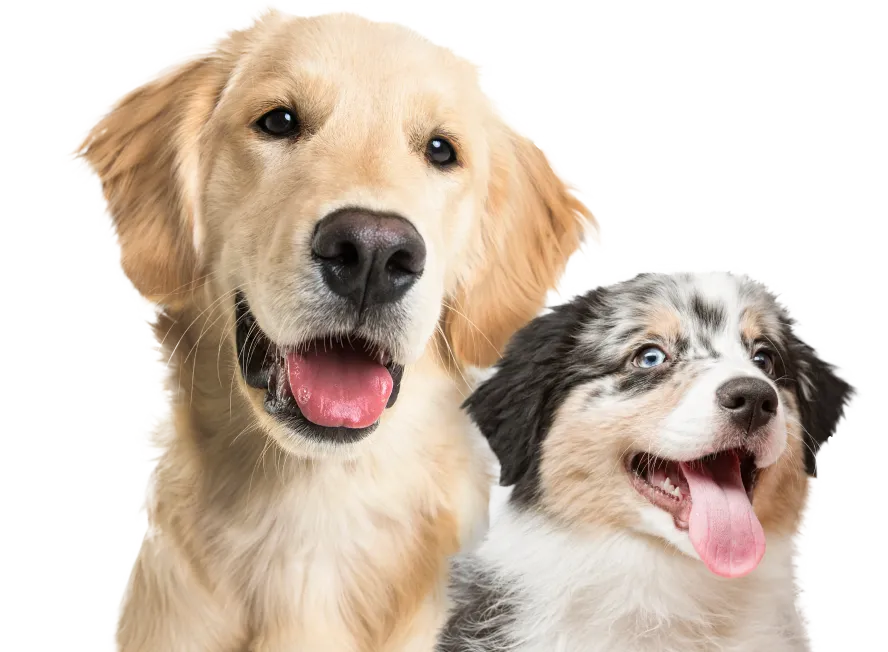All You Need to Know About WSAVA

DogFoodAdvisor is reader supported See how
Dog Food Advisor is 100% impartial and is never paid to promote any brand. But if you buy using links on this page, we may earn a referral fee.
Dog parents will have no doubt heard of WSAVA, or at least seen the letters when researching dog food or when speaking to their vet but perhaps weren’t sure what the letters refer to.
So here at Dog Food Advisor, we thought it would be useful to help dog parents become more knowledgeable about what exactly WSAVA is, what its values are, how it differs from AAFCO, and what its role is in terms of guidelines regarding dog food.
We spoke to Dr. Brandon Stapleton, DVM, head veterinarian at 5-star-rated The Farmer’s Dog, to answer all you need to know about WSAVA and its role in the pet food industry.
What does WSAVA stand for and what is its purpose?
WSAVA stands for the World Small Animal Veterinary Association. It’s an international organization focused on improving the health and welfare of companion animals worldwide as well as supporting the vets that care for them.
“WSAVA achieves this through approaches including providing guidelines, education, and collaboration to its members. It does this so that it can help advance the health and welfare of companion animals,” says Dr. Stapleton.
What are WSAVA’s nutritional guidelines on selecting a pet food?
Dr. Stapleton explains that WSAVA’s guidelines on selecting a pet food are a set of questions and advice to help veterinarians and pet owners assess and make informed decisions about pet nutrition.
WSAVA Global Nutrition Committee Guidelines on Selecting Pet Foods puts emphasis on the following:
- Looking out for pet food made by companies with robust nutritional expertise.
- Inquiring whether the food meets established standards for nutrient profiles.
- Checking for evidence of rigorous quality control and safety protocols during manufacturing.
- Being aware of products backed by research and formulated by qualified animal nutritionists.
“These guidelines serve as a framework for making nutritional recommendations based on important, general criteria about the product.”
What’s the difference between ‘guidelines’ and ‘recommendations’?
“Guidelines are broad principles or standards designed to assist in decision-making. For example, although WSAVA doesn’t endorse a given product, its guidelines outline what to look for in a high-quality pet food. Recommendations, meanwhile, are specific actions or advice derived from the guidelines.”
What are the questions WSAVA includes in their dog food guidelines, and why are they important?
Dr. Stapleton explains that WSAVA encourages pet owners to ask the following questions to assess dog food quality:
- Who formulates the food, and what are their qualifications? “Qualified professionals, such as veterinary nutritionists, ensure diets are scientifically sound and balanced.”
- What is the quality control process for ingredients and final food products? “Robust quality control ensures companion animal and owner safety.”
- Is it a complete diet? “Food should be labeled to show whether it provides a ‘complete’ diet with the required nutrients.”
- What is the caloric content of the food? “Understanding calorie content helps maintain healthy weight and energy levels in pets.”
These questions are important as they promote transparency and accountability in the pet food industry, guiding consumers toward choices that support their pets’ health and well-being.
Is there such a thing as ‘WSAVA-approved’ dog food?
“No, WSAVA does not approve, certify, or endorse specific brands or formulas,” explains Dr. Stapleton. “It maintains neutrality in its role.”

Is there any benefit to food that follows WSAVA’s guidelines?
“Yes, foods that adhere to WSAVA’s guidelines often reflect a higher standard of quality,” says Dr. Stapleton.
Benefits include:
- Assurance: Enhanced quality control processes reduce contamination risks.
- Nutritional soundness: Diets formulated by experts ensure all essential nutrients are included in appropriate proportions.
- Greater consumer confidence: Transparency and adherence to WSAVA principles provide reassurance about a product’s reliability and safety.
Does a company claiming it’s compliant with WSAVA guidelines mean anything significant to consumers?
While WSAVA does not directly certify products, a pet food manufacturer indicating that it’s compliant with WSAVA guidelines can signal a commitment to quality.
“It suggests that the manufacturer values the important factors that WSAVA highlights in its ‘questions to ask’. But, a consumer should still verify the company’s claims by asking the recommended questions.”
How does WSAVA differ from AAFCO?
- WSAVA is a global organization that aims to improve the health and welfare of companion animals. It focuses on improving veterinary standards and educating vets, and does not create or enforce regulatory requirements.
- AAFCO (Association of American Feed Control Officials) is a U.S.-based independent non-profit organization that plays an important role in setting nutritional guidelines that pet food manufacturers are required to meet.
Manufacturers can test their food against AAFCO’s nutrient profiles, as well as taking part in feeding trials. If they achieve positive results for either, they can then say that their food meets AAFCO standards for a complete and balanced diet.
In addition, AAFCO helps define ingredient lists by providing a list of definitions on its website, as well as providing standards for pet food labels. It’s important to note that it does not test the quality of pet food, or perform any sort of regulatory role and does not approve foods or perform pre-market approvals.
In summary, WSAVA emphasizes scientific principles and global education, while AAFCO focuses on aiding regulatory oversight within the U.S. market.
Final word
The Dog Food Advisor does not accept money, gifts, samples or other incentives in exchange for special consideration in preparing our reviews.
However, we do receive a referral fee from online retailers (like Chewy or Amazon) and from sellers of perishable pet food when readers click over to their websites from ours. This helps cover the cost of operation of our free blog. Thanks for your support.
For more information, please visit our Disclaimer and Disclosure page.



